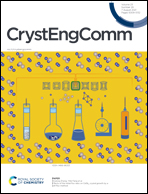In situ construction of a direct Z-scheme CdIn2S4/TiO2 heterojunction for improving photocatalytic properties†
Abstract
Direct Z-scheme photocatalytic systems driven by visible light to eliminate organic pollutants in wastewater have become important scientific tools in the field of photocatalysis. In this study, a direct Z-scheme CdIn2S4/TiO2 heterojunction with high efficiency was prepared through a simple hydrothermal method. Benefiting from the increased visible light response and prolonged lifetime of photoexcited carriers, the as-prepared CdIn2S4/TiO2 composites exhibit significantly promoted photocatalytic performance for the degradation of methyl orange (MO) under visible-light illumination (λ ≥ 420 nm). The CdIn2S4-25 wt% TiO2 (25CT) photocatalyst exhibited the highest degradation efficiency (96.2% within 30 min) with a rate constant of 0.1193 min−1 and remarkable stability and repeatability. In the meantime, the study of the photocatalytic mechanism shows that the charge transfer path conforms to the Z-scheme model, in which h+ and ˙O2− are the main active species. This study provides strong practical support for the preparation of efficient Z-scheme photocatalytic materials by hydrothermal methods.

- This article is part of the themed collection: Nanomaterials


 Please wait while we load your content...
Please wait while we load your content...